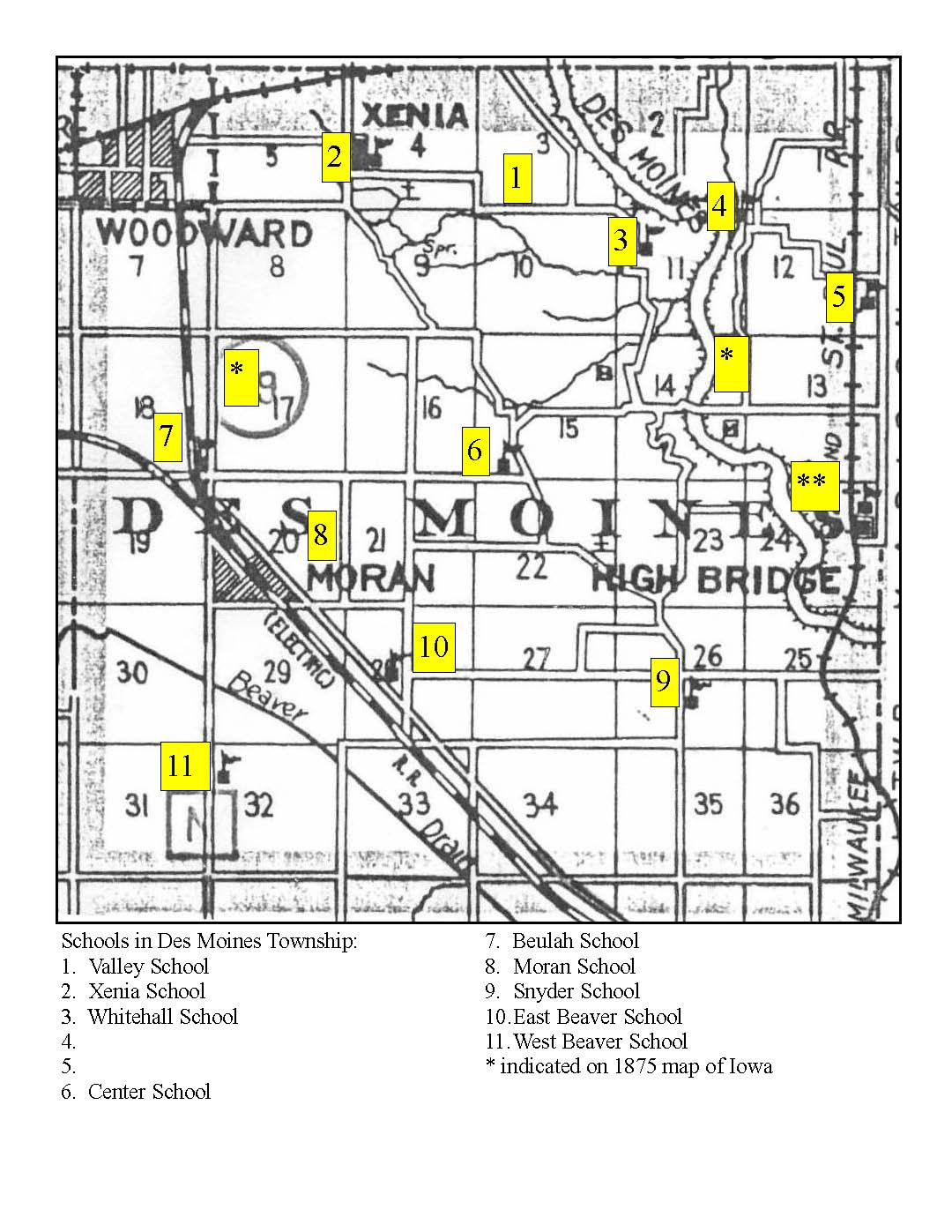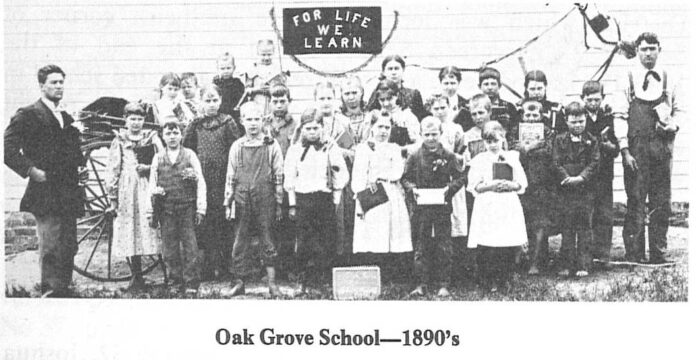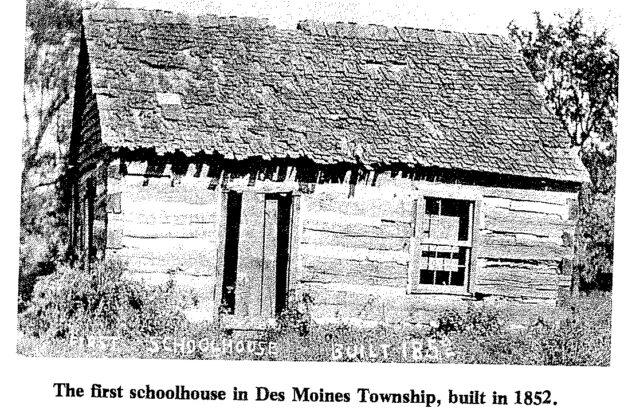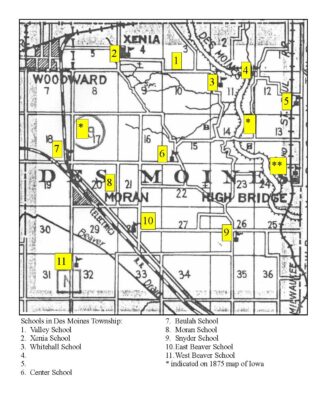This article comprises research conducted by Sue Leslie, Myrna Griffith and Deanette Snyder.
Although farming was king in Iowa due to the good soil, small towns flourished throughout the state because of two other enterprises: coal mining and the railroads.
According to “The History of Dallas County,” published by the Union Historical Co. in 1879, “the first school in Des Moines Township was taught in the house of Martin Tucker in 1850. The teacher, Dr. Plumly, had 10 pupils in attendance.”
Two years later, a log cabin school was built near Xenia. It was built without a nail or board and the roof was riveted clapboards held in place with weight poles. The door, floor, seats and writing desks were made of puncheon.
Later a new school was built in section 4. The Green sisters — Ruth, Edna and Verna — attended this school. Edna recalled that she helped carry water from a nearby well, and all the students drank from the same rusty dipper. This school was closed and torn down around 1946.
With the discovery of coal in the area and the subsequent establishment of mining towns, it is no surprise that the number of schools rose dramatically in the township. Miners brought their families and just like those who settled on farms in the area, they too wanted their children to have an education.
The Milwaukee Railroad made the decision in the 1880s to connect Marion, Iowa, to Council Bluffs. This led to the establishment of small communities of railroad workers along the proposed route in the towns of Xenia and Colton (which later became Woodward).
One example was Center School, which was built in the late 1800s or early 1900s to accommodate the children who lived in the mining camps of Philda and Scandia. Later Valley School was built in section 3. It had two rooms and was built for the children from those same mining camps. It closed around 1944 and was torn down.
Snyder School was the school for children in the area of Dallas Mine. This school included one building with two classrooms and another building with one classroom. This school probably closed about the time the Dallas Mine closed.
Moran School was built in 1920 to accommodate children who lived in Moran. The building was later sold to Alva Gossik of Madrid for use as a home.
Prior to 1885, Beulah School District was part of Prairie Independent School District. On May 5, 1885, a sale was held and funds belonging to the Prairie School District were divided between the Beaver, Comer and Beulah school districts.
There were two Beaver Schools—East Beaver School in Section 28 and West Beaver School in Section 32.
In 1885 the original Beulah School was built in the southeast corner of Section 18. “Through the Years,” the 1983 Woodward Centennial book, said that “with the increase in size due to the coal mine in Moran, in 1918 the Beulah School was enlarged and made into a two-room school. It continued to serve the needs of the district until 1955 when, with the consent of those concerned, the school was closed, and the children were included in the Woodward school district. The building was sold to Rudy Harlock, who moved it and remodeled it into a home. The bell was purchased by the Catholic Church in Woodward.”
In an ongoing effort to preserve the history of our township schools, we are seeking details on the names and locations of the other schools in Des Moines Township. If you have any information about these schools, such as their location or stories of students who attended them, our group would like to hear from you. Please contact Myrna Griffith at wpldirector@minburncomm.net, Deanette Snyder at deanettesnyder@gmail.com or Sue Leslie at densueles@aol.com.





















